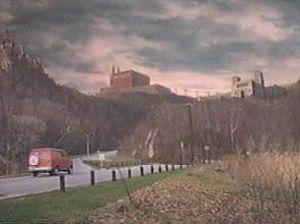The New York Times ran an op-ed piece today entitled What Tech Hasn’t Learned from Urban Planning. Allison Arieff catalogs the recent trend of tech companies moving from the suburbs of Silicon Valley into the city of San Francisco, while simultaneously adopting the terminology of urban planning such as town hall, public square, etc.
As she points out, these businesses are often failures from the perspective of good urbanism, given that as they enter an area they take over huge pieces of real estate, thus driving up rents and driving out the local businesses like coffee shops, cafes and restaurants that make up the current life of the street. There’s some excellent photographs in the article, showing these places, once alive with foot traffic, that are now deserted.
While I admire her for calling on tech companies to be more community minded as they move from the suburbs to the city, I think the very idea of tech companies being located in the heart of the city is a bad idea. To quote James Howard Kunstler: Marginal activities belong on the margins. What these companies do is a marginal activity, not from an economic perspective necessarily (because obviously these are multi-billion dollar businesses), but from what they provide directly to the public from their day-to-day activities, yes. A room full of code-monkeys churning out software, websites and apps can never really contribute to the vibrancy of street life, because they will always be holed up in front of computer screen. Couple that with the fact companies like Google offer their employees all of the amenities they could ever want within the company walls (restaurant, gym, daycare, etc.), and you have the perfect storm of anti-social business behavior.
The suburbs really are the best place for these businesses to exist in their current form. Their operations are what I would call the spaceship model: everything is self-contained, so that the employees never have to leave. It’s not sustainable, and we need to replace the Star Trek meets the Jetsons mentality that drives these businesses, but having them move into the cities is not the way to do that. While it is admirable (in a strange, “aren’t you so hip to the aesthetic zeitgeist sort of way”) that these companies want to leave the suburbs behind so that they can be part of the life of the city, they’re causing more harm than good in doing so because they haven’t altered their core operating principles. Urbanism is just as much a state of mind as it is the physical realm, and as the pictures from this piece show, with the wrong state of mind, even the best designed places will become lifeless hulks.
Don’t salute these companies for moving into the city based on their bogus ideals and sapping the life out of the great spaces they’re trying to co-opt. Salute them when they change their way of thinking about how those spaces work. Until they do, let’s keep their marginal activities safely on the margins.








